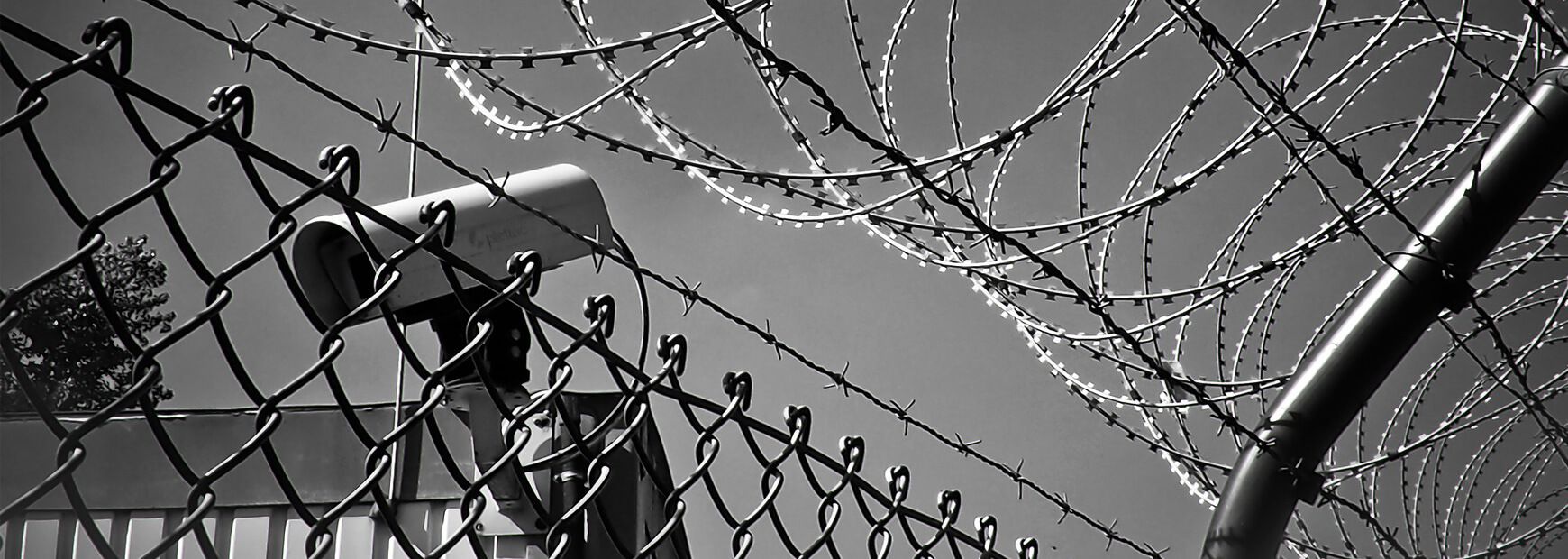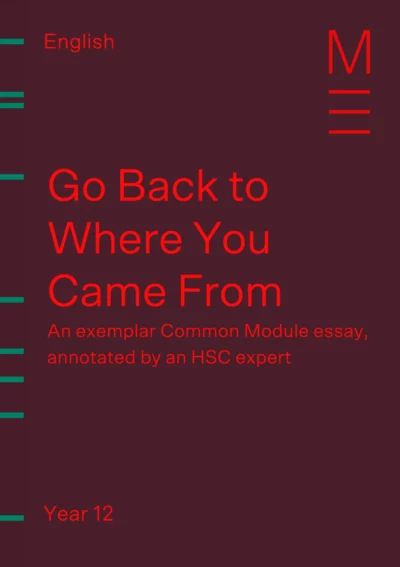Change your location
To ensure we are showing you the most relevant content, please select your location below.
Select a year to see courses
Learn online or on-campus during the term or school holidays
Learn online or on-campus during the term or school holidays
Learn online or on-campus during the term or school holidays
Learn online or on-campus during the term or school holidays
Learn online or on-campus during the term or school holidays
Learn online or on-campus during the term or school holidays
Learn online or on-campus during the term or school holidays
Get HSC Trial exam ready in just a week
Get HSC exam ready in just a week
Select a year to see available courses
Science guides to help you get ahead
Science guides to help you get ahead
Need a hand with Go Back to Where You Came From for Common Module? Read a Band 6 Sample Response and download an annotated version so you can learn how to ace Paper 1 Section 2.

Join 75,893 students who already have a head start.
"*" indicates required fields
You might also like
Related courses

Join 8000+ students each term who already have a head start on their school academic journey.
You need to see what a Common Module: Go Back to Where You Came From Band 6 Essay looks like before you write one. That’s why we’ve produced one for you below.
If you really want to excel, you need to reverse engineer the exemplary responses you encounter so you can understand how they are put together and why they are effective. Only you can then incorporate this into your own work.
An exemplar Common Module Essay annotated by HSC expert. Fill out your details below to get this resource emailed to you. "*" indicates required fields
Free Year 12 English Common Module: Go Back To Where You Came From Annotated Essay Download

Free Year 12 English Common Module: Go Back To Where You Came From Annotated Essay Download
We recommend reading it carefully and breaking down what it does so successfully. Ask yourself some questions:
Once you’re finished, apply the strategies you uncover to your own Common Module: Texts and Human Experiences essays.
If you want to download a copy of this response, click the banner at the end and we’ll send you an annotated version that breaks down why this is a rocking response.
This essay is a response to the following question:
Texts “hold as ’twere the mirror up to nature: to show virtue her feature, scorn her own image, and the very age and body of the time his form and pressure.” – Hamlet (3.2.17-24)
To what extent does this statement reflect representations of individual and collective human experiences in your prescribed text and ONE other related text?
The figurative notion of texts mirroring nature implies that texts are an accurate reflection of human characteristics and relationships, and this is represented in the documentary series by Ivan O’Mahoney, Go Back to Where You Came From (2011); and the eclectic poem by Oodgeroo Noonuccal, Let Us Not Be Bitter (1964). These two texts represent both individual and collective human experiences by exploring the process of Othering, which, in their respective contexts of restrictive government legislation and social tensions, results in an ‘us against them’ dynamic. In both representations, individual experiences of identity and belonging uncover the desirable aspects of our humanity, as much as the inconsistent. Both O’Mahoney and Noonuccal, therefore, create texts which “show virtue her feature” while simultaneously “scorn[ing] her own image”, and, in this way, draw our attention to the impacts of our shared and individual experiences on the way we perceive the world and ourselves.
Both texts represent the collision of cultural identities by exploring an ‘us vs them’ dialectic in the shared human experiences of displacement and acceptance. The social documentary series Go Back to Where You Came From is a social experiment featuring six participants – described as ‘ordinary Australians’ in the marketing tagline – who are all made to experience the journeys of asylum seekers to Australia. The program was first aired in 2011, a tumultuous era in which the ‘Stop the Boats’ immigration policies catalysed extreme nationalism. The resultant xenophobia is evident in the documentarians’ characterisation of Raquel. In Episode Two, when she arrives at the Malaysian airport, she comments on the modesty of Malaysian women’s clothing, by declaring, “I don’t care. I dress how I want to. If they wanna wear tea towels and long pants, that’s their problem”. The mid-shot of Raquel at the airport, in combination with the ignorant tone of her candid dialogue, highlights the xenophobic rhetoric and high emotion of public discourse surrounding refugees. In this way, the documentary seeks to hold a mirror up to anomalous emotional behaviours in real life. Although Raquel’s understandings are challenged over the season, her initial non-acceptance is visualised in the opening sequence of each episode: a montage of archival footage of refugee boats crashing into shore; Australian politicians in public address; protesters, and reporters; accompanied by a soundscape of violent ocean waves and sirens. The documentarians’ use of montage and provocative characterisation enhances the ‘shock factor’ of the series and mirrors our collective desensitisation to news representations of the displaced Other.
In Let Us Not Be Bitter, Noonuccal similarly represents the polarisation between colonial Australia and Indigenous Australians and its effects on shared experiences of national identity and belonging. The poem was published at the latter end of forced assimilation policies, which sought to integrate Aboriginal Australians into ‘white’ Australia through various means including state guardianship of Aboriginal children, resulting in the Stolen Generations. This profundity is further evidenced in: ‘my own dark people / Come stand with me, look forward, not back’, where pause and enjambment are used to punctuate Noonuccal’s encouragement of Indigenous peoples to reconcile their differences and move towards a more inclusive future. The volitional tone in Noonuccal’s poem presents a call to action for fellow Indigenous Australians to look to a future of cross-cultural healing, despite a paradoxical past of cruel mistreatment: ‘Time for us stood still; now we know / Life is change’. Building on this, Noonuccal evokes poignancy and pain through inclusive language: ‘Let us try to understand the white man’s ways’,
Whilst Noonuccal distinctly addresses prejudice through the differing experiences of Indigenous and non-Indigenous Australians by posing potential futures for Australia, O’Mahoney sets out to ‘scorn the image’ of intolerance embedded in the Australian identity. In Go Back to Where You Came From, the documentarians deliberately emphasise the ways in which most of the participants’ first-hand experiences of the plight of refugees ultimately transform their ignorance. This is notably seen in Episode 3, when Raye is debriefing on her experiences of living with the Masudi family in a refugee camp in Africa: “We just have to survive. And that’s about all they’re doing in there, is surviving, because it certainly isn’t living”. Raye’s emotive dialogue overlays a montage of refugees in the camp, and the resultant sympathy is heightened by a smash cut to a long shot of a sunset behind barbed wire. O’Mahoney, thus, represents the collective human desire for freedom and underlines how the shared experience of ‘walking in the shoes’ of others can affect an individual’s experiences of the world and themselves. Instead of encouraging Indigenous Australians to ‘walk in the shoes’ of non-Indigenous Australians, Noonuccal is far more interested in self-reflection. Her historical reference to the Stolen Generations in, ‘The past is gone like our childhood days of old’, acknowledges the oppression that Indigenous Australians collectively experienced; followed by, ‘The future comes like dawn after the dark.’ This profound combination of simile, alliteration, and juxtaposition simultaneously addresses the suffering of Indigenous Australia as a single entity, while providing for a form of hopeful anticipation. Noonuccal, therefore, constructs a poem to the same end that O’Mahoney uses the form of social documentary: to mirror individual experiences of changes in prejudice and intolerance, and to position them as collectively emblematic.
Both Go Back to Where You Came From and Let Us Not Be Bitter explore Othering and nationhood, and their effects on the more personal experiences of belonging and identity. Madhouse and Noonuccal offer compelling representations of these sometimes paradoxical experiences. In relation to the given statement, it can ultimately be concluded that when texts expose the virtuous aspects of our human natures, they automatically draw our attention to the less desirable qualities that we perceive in ourselves, both individually and collectively.
Written by Guest Author
We have regular contributions to our blog from our Tutor Team and high performing Matrix Students. Come back regularly for these guest posts to learn their study hacks and insights!© Matrix Education and www.matrix.edu.au, 2025. Unauthorised use and/or duplication of this material without express and written permission from this site’s author and/or owner is strictly prohibited. Excerpts and links may be used, provided that full and clear credit is given to Matrix Education and www.matrix.edu.au with appropriate and specific direction to the original content.